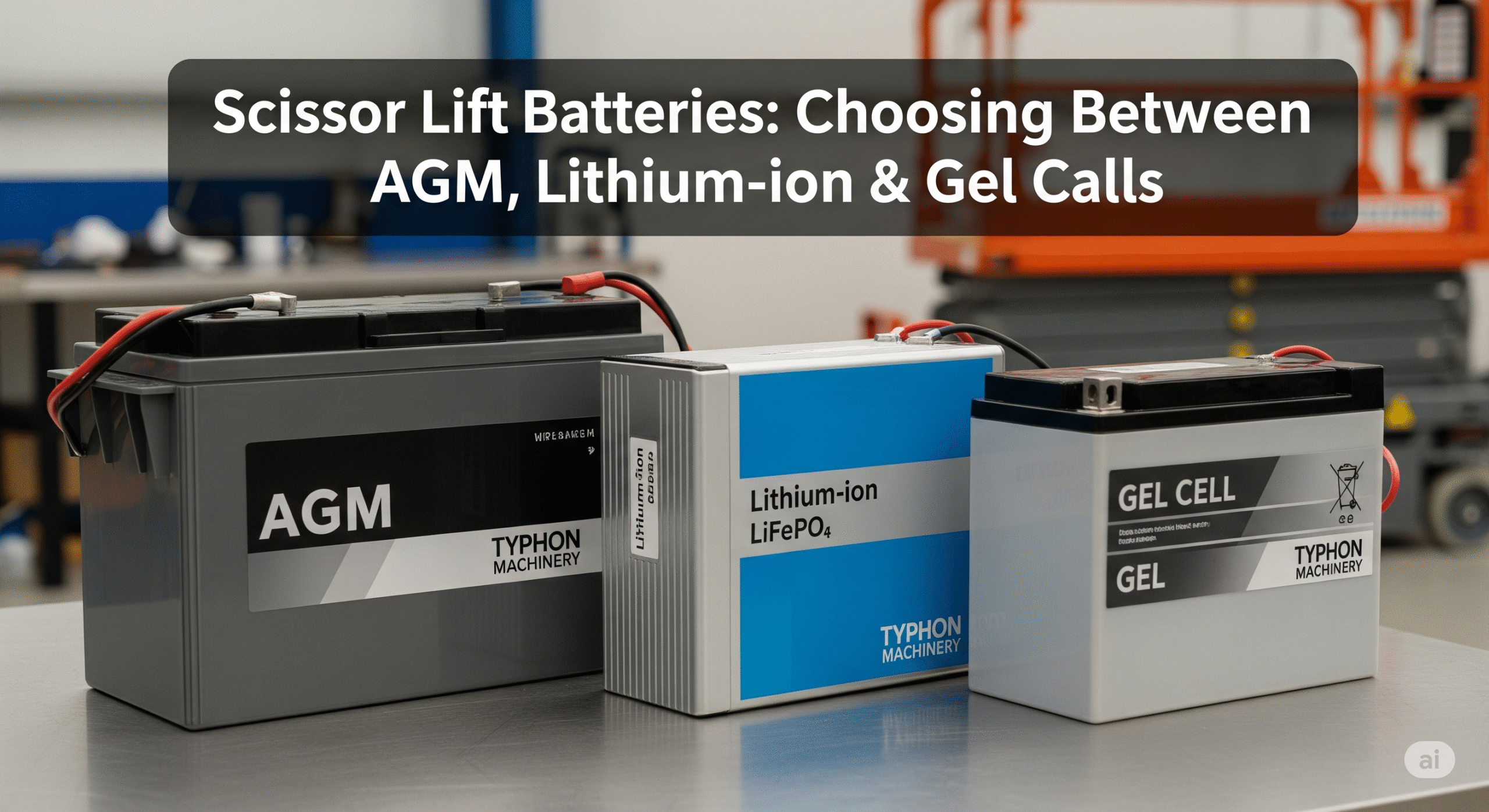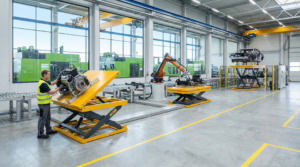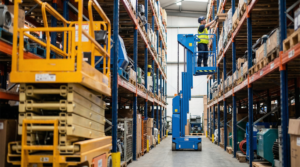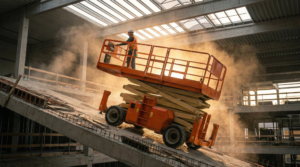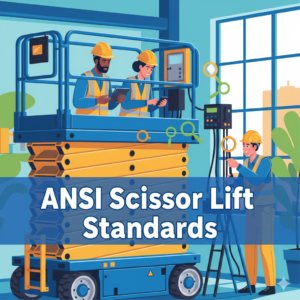Scissor lifts are instrumental in construction, warehousing, and maintenance. These are the machines which help in the fast and sometimes the safe transportation of goods and people from one floor to another.
However, to the scissor lift, scissor lift batteries are seen as the lifeblood and they are extremely important because this contributes much to the performance, safety, and at the same time the cost effectiveness of the machine yet.
Why Scissor Lift Batteries are Important?
Deciding which battery is best for a scissor lift is often the step where the greatest number of the consumers guess that the battery among AGM batteries, Lithium-ion batteries and Gel Cell batteries is the one that is used for giving power to the scissor lift.
Also, this article that touches all the areas related to the issue at hand will not leave us in the dark but it will delineate each battery type, show their main features, discuss the advantages and disadvantages, and at last pinpoint the most advantageous for a scissor lift.
Apprehending Scissor Lift’s Battery Requirements
Scissor lifts are often matched with the one that serves them the most, which is the battery of the deep-cycle type and the one which is the most in-demand for them is the lead-acid battery. This technology of battery allows steady power supply over a long time and has the following attributes of such a battery:
- Reliable and safe in high-demand conditions
- Repeated cycling and deep charge-unload operations
- Being able to resist vibration and extreme weather
Low maintenance or no maintenance together with long cycle life is a prerequisite of the new battery.
When you are striving to come up with the solution that will fit your budget, downtime tolerance, and operational needs, the choice of battery types will be inevitable. Those rational choices will have a customer that is most sensitive about both performance reliability and total ownership cost at their core.
1. AGM Batteries for Scissor Lifts: The Traditional Powerhouse
When it comes to handling moving devices, lead-acid batteries remain the preferred choices of the fleet of material handling equipment. AGM (Absorbed Glass Mat) batteries are nothing but sealed lead-acid batteries of a unique kind whose technology (fiberglass mat) renders them spill-proof and durable.
Pros of AGM Batteries
Nada Maintenance: The battery is supplied with water, and hence, there is no need for maintenance.
Sturdy: Neither the moving of the machine on tough roads nor its transportation damages the battery at all.
Cheat: At the period of purchase, the batteries are much cheaper than those of the competition (black-belt-people).
Cons of AGM Batteries
- Limited Life Cycle: Here, the point is that a battery can be recharged and used for only 300-500 cycles at 50% depth of discharge.
- Bulky: The machine is heavy because the weight limit is exceeded.
- Not Economical: The larger resistor will result in higher energy losses and the equipment will have higher energy consumption.
Type Of Uses:
- Less frequent usage by the device
- Use in low-cost or short-term equipment leasing.
- Smaller fleets with the need for the replacement of parts and machines more often.
2. Lithium-Ion Batteries: The Premium Performer
Most of the world’s leading scissor lifts brands are now adopting Li-Fe battery technology to power their pallet truck and forklift fleets, discarding lead-acid batteries as yesterday’s solutions, and being the trend of shifts in the lift truck industry.
The newest generation of lift batteries which are lithium-ion (LiFePO4) batteries can offer various features including but not limited to more long-life span, lower maintenance, and high performance.
Advantages of Lithium-ion Batteries
- Long Lifespan: 3,000 cycles worth 80–100% DOD.
- Fast Charging: 3–4x faster charging than AGM or Gel.
- Lighter Weight: Lift efficiency can be improved by 60% lighter weight.
Disadvantages of Lithium-ion Batteries
- High Initial Cost: Maybe 2-4x costlier at the beginning.
- Thermal Management: Needs weather tracking in harsh temperature conditions.
- Special Chargers Required: Not worked on with usual SLA chargers.
Main Applications of Lithium-Ion Batteries:
- A good choice for heavy or prolonged tasks
- Economically efficient green fleets
- Indoor and eco-friendly work zones (zero emissions)
3. Gel Cell Batteries: The Middle Ground
Gel batteries take up a large market share of the sealed lead-acid batteries market as it is only the AGM batteries that rank above them in terms of sales. They not only participate in the startup system but also have a high depth of cycling. Most of them consist of a silica-based thick electrolyte that contributes to the stabilization of the battery.
It is evident that gel batteries are non-toxic, and hence, more eco-friendly than traditional petrol-driven cars. By the same token, they are insulated (ideally separated from people) and in a battery encasement where not a bit of gas can leak out, and hence in a sealed battery, no spillage can take place and there is thus no danger or risk of explosion.
Advantages of Gel Batteries
- Perfect Thermal Stability: It is good at operating in the hot environment.
- Longer Life Than AGM: Most probably 500–800 cycles.
- Secure and Leak-Free: Fully-closed and non-manipulatable
- Price Point: A little more expensive than AGM, and a bit less than lithium.
- Sensitive to Overcharging: Needs exact voltage regulation.
Gel Batteries are Ideal for:
- Entities that are working in the open-air environment and high temperature routinely
- Moderate rated applications together with the control of charging
- Consumers with a desire to strike a balance between cost and capacity
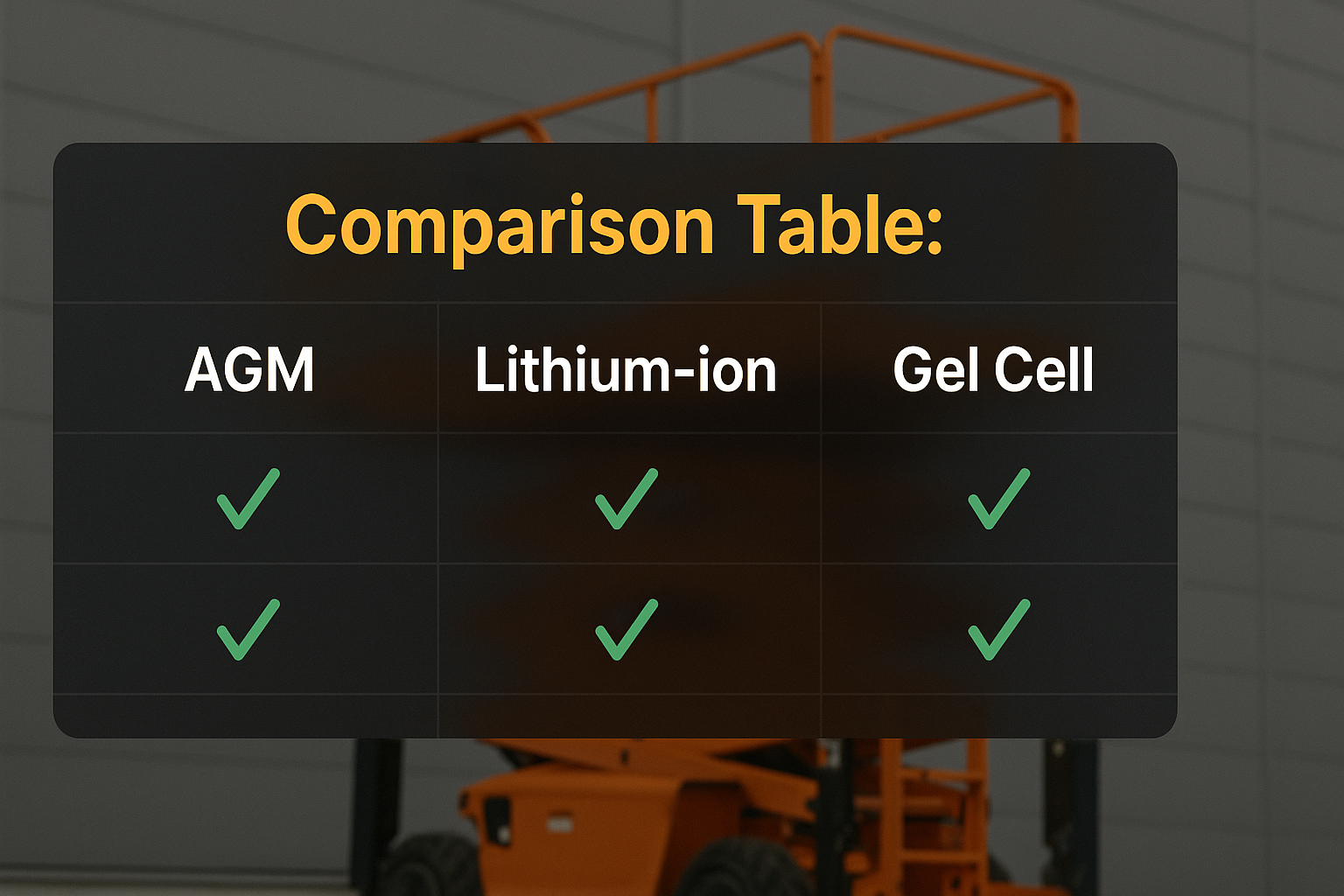
Comparison Table: AGM vs. Lithium-ion vs. Gel Cell
| Feature | AGM Battery | Lithium-ion Battery | Gel Cell Battery |
| Cycle Life | 300–500 cycles | 2,000–3,000+ cycles | 500–800 cycles |
| Charge Time | 8–10 hours | 2–4 hours | 10+ hours |
| Maintenance | No | No | No |
| Weight | Heavy | Light | Moderate |
| Initial Cost | Low | High | Medium |
| Temperature Resilience | Moderate | High (with BMS) | High |
| Energy Efficiency | ~80% | ~98% | ~85% |
| Self-Discharge Rate | 3–4% per month | 1–2% per month | 2–3% per month |
| Best For | Budget/Fleet Rentals | High-performance, TCO | Heat/Outdoor Applications |
Key Aspects to Look at Before One Decides to Get Scissor Lift Batteries
It is not only the chemistry, but also the battery’s application matching that is crucial. Attention should be paid to the following points:
- Usage Frequency
- All day long – Go for lithium-ion as you will save a lot of money in the long run.
- Spares for special cases – AGM or Gel. may be enough.
- Charging Infrastructure
- Are smart chargers available? Then, dont hesitate to get a lithium-ion battery.
- Not having smart chargers available? Then, you should choose a Gel or AGM battery.
- Battery Conditions
- If it is too cold or too hot – Lithium or gel battery both accompanied with a BMS.
- Because of the dust – The assemblage of AGM or Gel cells that are air-tight is not affected by dust.
Environmental Conditions
Battery maintenance is the determining factor in the performance of the battery, no matter what the battery chemistry is.
Checklist for Maintenance
- Regularly check the voltage level: You can prevent deep discharge situations by doing so.
- Clean the contacts regularly: You can use a soft brush and a solution of baking soda.
- Store the battery in a cool, dry place: The heat damages the batteries health.
Final Verdict:
Not just a matter of the price, selecting the right battery type of scissor lift also involves finding the battery type that exactly fits the work you are engaged in, the place you are in, and the charging resources you have.
One of the areas where different batteries could be suited is AGM which is particularly convenient if the customer is willing to invest some money, Gel that makes it possible for people to work in an open-air setting, or Lithium-ion which is good for capacious and extremely efficient machines.
This kind of awareness will not only help the working hours of the machine extend, but also it will result in the budget savings of the business operation as well.
One must go over this guide once again and also remember to take a look at the scissorlifts.org website for a lot of in-depth knowledge on Scissor lifts, aerial lifts, and power equipment optimization.
FAQs on Scissor Lift Batteries
- How long do scissor lift batteries last?
The details are referring to frequent use, caring, and the manner of use while charging. The battery can run out at different times:
- AGM: 1–3 years
- Gel: between 2 and 4 years.
- Lithium-ion: 5–10 years
- Can I replace an AGM battery with a lithium-ion battery in a scissor lift?
Yes, you sure can, but check if you have such a lift that is compatible and you may be required to replace the Battery Management System (BMS) and chargers.
- Which battery is best for outdoor scissor lifts?
Gel batteries are the best option in hot climate conditions. They are more heat-tolerance and thus safer.
- Are lithium-ion batteries really cost-effective on the long run?
Indeed they are. Though the start-up costs are high, they have a longer lifespan, are faster in charging, and require minimal replacements and maintenance, thus resulting in downtimes and labor costs being almost zero.
- How do I know when my lift battery needs replacement?
- Check for Reduced lifting speed.
- The battery can’t be charged for a long time.
- Heat and bulging of the casing are other signs of the battery’s probable fire risk.
- What is the best security choice for a battery to be used in indoor lifts?
AGM and Lithium-ion batteries are also the kinds of batteries that are devoid of dangers, sealed, and not containing any poisonous gases that can hurt the workers. To be precise, they are the most secure options for this case.
- How frequently does service of my scissor lift battery come up?
When you finish using up the battery, you should charge it again. One thing to avoid is letting the battery get discharged fully and for a long time and also, never overcharge it, especially if it is AGM or Gel batteries.
What would you recommend, Lithium-ion, provided that coastal line cost was not your main concern but your preference for durability, efficiency, and no breakdowns?
In case the battery is to be used at different places like outdoors, warm, or corrosive work conditions with a demand for liquid-tight safety, only go for Gel Cells.
For the frequent users of a fleet that requires a lithium-ion battery pack or those who have situations regularly in which they rent a scissor lift lithium-ion energy units are considered to have a greater return on investment (ROI) during a longer period of time, while short-term projects, or rental type of fleets call for AGM or gel cells for their cost and reliability qualities.

